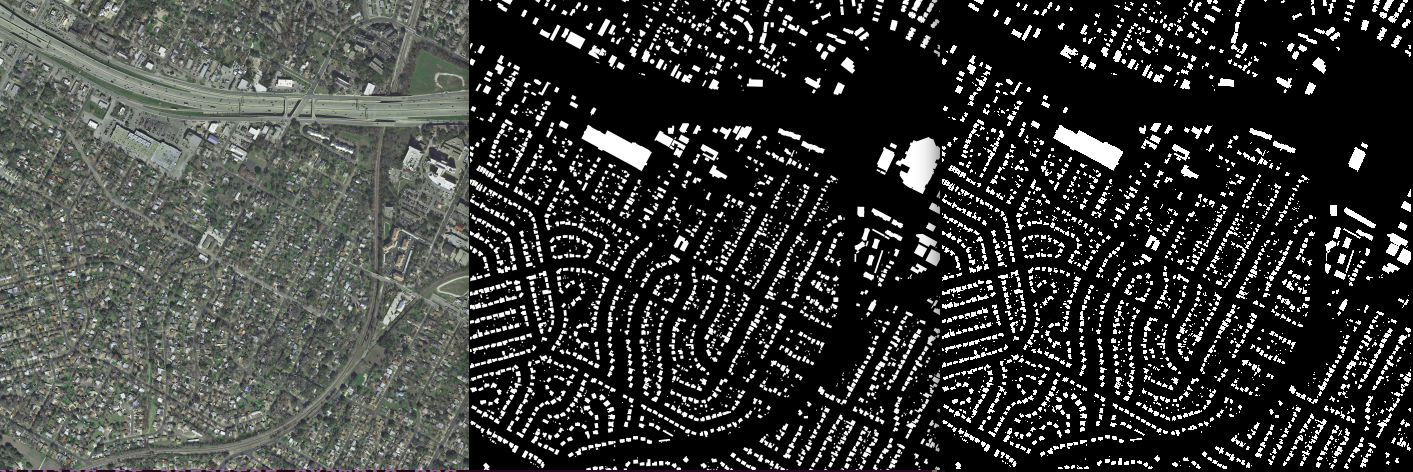This repository aims at producing deep learning labels starting from OpenStreetMap (OSM) data for semantic segmentation algorithms applied to aerial images.
The project is strongly related to Deeposlandia, another Oslandia project dedicated to deep learning algorithm design.
This project runs under Python 3.
Within a virtual environment , by downloading the repo and pip-ing the
setup.py file:
git clone http://github.com/Oslandia/osm-deep-labels
cd osm-deep-labels
pip install .
The project requires GDAL. For ̀Ubuntu` distributions, the following
operations are needed to install this program:
sudo apt-get install libgdal-dev
sudo apt-get install python3-gdal
The GDAL version can be verified by:
gdal-config --version
Now let's retrieve a GDAL for Python that corresponds to the GDAL of system:
pip install --global-option=build_ext --global-option="-I/usr/include/gdal" GDAL==`gdal-config --version`
python3 -c "import osgeo; print(osgeo.__version__)"
For other OS, please visit the GDAL installation documentation.
Additionnally Mapnik is required for rendering purpose. As for GDAL, the
installation process has been tested only with a Ubuntu distribution.
First, install Mapnik through apt-get (do not forget to install boost as
well):
sudo apt-get install libmapnik-dev libboost-python-dev
Then you can verify the version of the software with the following command:
mapnik-config -v
Then you must get the Mapnik Python bindings. One possible solution is to
clone the corresponding Github repository:
git clone https://github.com/mapnik/python-mapnik
cd python-mapnik
git checkout v3.0.16
python setup.py install
And voilà!
In this project, we use Luigi, a Python package that structurates the code as a reliable data pipeline.
The main steps of the pipeline are as follows:
- Extract coordinates from raw
tiffimages ; - Request Overpass API with corresponding coordinates ;
- Save resulting OpenStreetMap data in a database with Osm2Pgsql ;
- Produce rasters from in-base data
During the process, a particular attention must be paid on geographical
projections. To ensure that produced renderings are reliable, we extract the
raw SRID from tiff images, and use it all along the pipeline in Osm2pgsql
commands as well as in Mapnik generation. In this last case, we need to convert
the SRID into a Mapnik-compatible string; then we
request spatialreference.org in this purpose
(many thanks to the creators for this amazingly useful website!).
By focusing on INRIA Aerial Image dataset, we can visually compare the output of this project with aerial image labelled versions.
For instance, one can show an extract of Austin, Texas, where OSM data quality seems good (left: aerial image, middle: labelled image, right: current output):
Another example show on the opposite a case of OSM failure, in Kitsap County, Washington (left: aerial image, middle: labelled image, right: current output):

